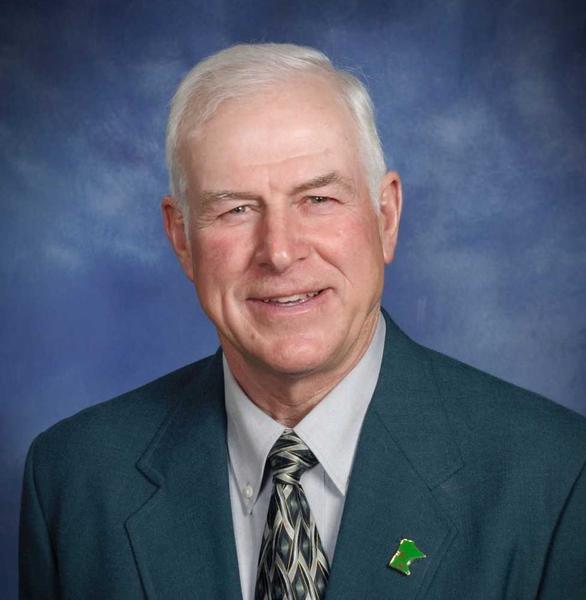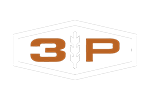
Wadena SWCD Supervisor, Tom Schulz, Talks Conservation, Forestry, and Carbon Sequestration

Evergreen Lane Farm was established in 1888, and today consists of 360 acres in Ottertail and Wadena Counties. Tom and Kyle Schulz bought the farm in 1974 which was a dairy at the time and continued to milk cows until 1991. They are the third generation to be responsible for the stewardship of the farm.
Tom is actively engaged in the Wadena County Soil and Water Conservation District and was previously a Farm Business Management instructor in Staples, MN.
Kyle is a retired teacher and master gardener and Tom is a committed conservationist.
Have your farm plans changed in recent years?
At age 75 my ideas for aggressively expanding my farming operation are greatly diminished. We gave up our registered Angus herd in 2021 as my wife correctly observed we're getting too old to chase down, tag give vaccines and weigh the newborn calves and all of the other things associated with keeping cattle.
What energy sources are used on the farm?
The farm uses both solar evacuated tubes for heating domestic hot water and for supplemental heat of the home as well as photovoltaic solar panels to meet almost 100% of the farmstead’s electrical needs. Additional hot water heat is supplied by burning wood from the farm woodlot in a highly efficient gasification furnace.
Can you tell us about your forestry production?
In addition to a 38-acre forestry acreage in conventional forestry production, 68 acres were planted to “hybrid poplar” beginning in 1996. Six varieties of trees were planted on two separate sites. The trees were harvested in 2008. Both sites were replanted in 2010-2011 to a combination of Hybrid Poplar and White Pine species in a 10 by 10-foot row spacing. All forested acres are covered by a forest management plan. The farm is a member of the American Tree Farm Association. All forestry acreages are enrolled in the MN Sustainable Forestry Incentive Act (SFIA).
How has your farm operation remained resilient?
The farm has an active conservation plan and forestry management plan. Rotations are followed on all irrigated and non-irrigated crop land. Wildlife habitat is preserved with all farming practices. Hunting is allowed with permission on all farm acreages. Rotational grazing is utilized on the home farm location for a neighbor’s beef herd. The farm was the first in the county to be recognized by MN Department of Agriculture’s MN Agricultural Water Quality Certification Program (MAWQP) and has then received endorsements in Integrated Pest Management, Soil Health, Wildlife and Climate Smart Agriculture.
What barriers do you see to the adoption of conservation practices?
Barriers that I have observed are typically financial, i.e., high cost implements that are used for conservation planting. I like the concept of no-till planting into existing or cover crops. I gave up owning planters long before I stopped growing row crops. The inability to rent or hire custom operators to plant for me hindered my operation from employing these new methods.
What do you think people are missing in the conversation around climate?
I live in the out state of MN where political attitudes seem to be fixed in dogma about our climate. My goal personally has been that if I'm ever asked by my grandchildren what I did about climate change I can truthfully say I did everything I could to limit my own and my farm’s carbon footprint. I try to portray a positive attitude about limiting carbon that is not being recycled by reclaiming the carbon I release to the environment by planting trees and actively managing my forestry acres to sequester as much carbon as possible. I also think that the best product my farm can produce is clean water which in turn has a large effect on reducing climate disruptions.
What opportunities for advancing climate-smart agriculture through markets and policy have been on your radar?
I have been involved heavily on the SWCD level in promoting the planting of an additional 1M acres of trees on our transitional open lands in MN. To bring this to fruition we need to figure out how to compensate landowners in the period from tree planting to active carbon sequestration or a about 20 years. Landowners face yearly taxes and forestry provides chunky payments at long intervals, often 40 years from when the seedling is planted. At about 20 years a carbon sequestration contract should be available to compensate them for the eco-services their trees provide.
Carbon contracts at this stage are often geared at enrolling new lands and do not provide recognition of the ongoing efforts that exist already.
If you could tell Congress to do one (or two) things that would help your family continue to farm in the next generation, what would it be?
My sons were offered the opportunity to continue the farm and said thanks but no thanks, dad. Neighbors said I was fortunate to get a direct answer rather than someone jumping ship part way into the transition process. The boys each did receive a debt free 4-year college education financed by the farm and are successful in their chosen lines of work and have sustained a respectful environmentally conscious world view.
What I need from Congress is a new program patterned after the Conservation Reserve Enhancement Program (CREP) that would allow enrollment of either new or existing working tree plantations that would provide set payments for a given number of years in exchange for a permanent working lands easement for the forestry production and carbon sequestration on these properties including a cost share provision foe establishment and continued care (bud capping etc.).
NRCS's conservation programs are difficult to enroll in and hamper prompt employment of conservation practices while waiting for "batching periods" to close to find out whether you’re in the program or not. Also, NRCS's Regional Conservation Partnership Program (RCPP) program is in need of revision as one of its stated aim is to provide flexibility in program function while in the final analysis it does not. MN State NRCS Director, Troy Daniels has been tasked with making suggestions to improve the program.
This article was also published in the Minnestoa Agriculture Magazine in December of 2023 as part of a "Climate Resilience on the Farm" series. To view these stories, click here.
Posted in: News
